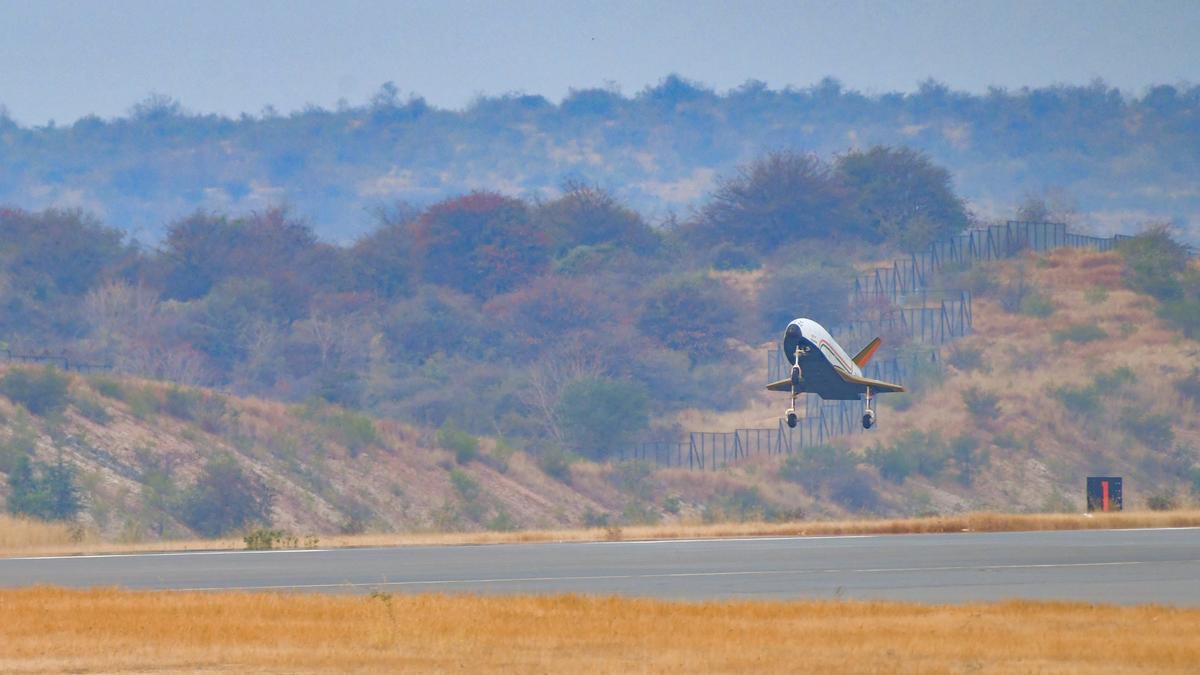10.06.2024

File pic of the successful LEX-02 mission in March 2024.
Taking its Reusable Launch Vehicle (RLV) programme one more step closer to reality, the Indian Space Research Organisation (ISRO) is all set to carry out the third and final RLV landing experiment (RLV LEX).
Speaking to The Hindu about the upcoming test mission, S. Unnikrishnan Nair, Director, Vikram Sarabhai Space Centre (VSSC), said a Mission Readiness Review (MRR) held on Friday cleared the mission for the first half of June, subject to weather conditions, at the Aeronautical Test Range at Chitradurga, Karnataka.
“We are scaling up the difficulty level with the third and final mission,” Dr. Unnikrishnan Nair said.
RLV-LEX missions involve taking an unmanned winged prototype, christened Pushpak, to a designated height and releasing it to land safely under varying conditions. In LEX-03, Pushpak will be carried to a height of 4.5 km and 500 metres to one side of the runway using an IAF Chinook helicopter and released. In LEX-02, the second mission, the altitude was the same but the lateral distance from the runway was 150 metres.
“It has to autonomously approach the runway, manoeuvre by making crossrange, downrange and altitude corrections to touch down on the runway,” he said. The LEX-03 mission will look at how the sink rate, or the rate of descent, can be cut down to reduce the impact load. It will also have on board a real-time kinematics (RTK) package. Yet another challenge before the upcoming mission is handling tailwind conditions.
The VSSC at Thumba was responsible for the design and development of Pushpak.
In the next stage of tests under the RLV-TD, the ISRO will use an unmanned Orbital Re-entry Vehicle (ORV). The vehicle used will be 1.6 times the size of ‘Pushpak’‘ used for LEX. It will be placed in a 400 km orbit around earth using a modified Geosynchronous Satellite Launch Vehicle (GSLV). This mission is expected in two years time. “Various experiments will be carried out in orbit. It will have, among other things, a thermal protection system for safe re-entry into the earth’s atmosphere and a retractable landing gear. The ISRO has started work on the ORV,” Dr. Unnikrishnan Nair said.
The ISRO had successfully carried out the LEX-01 mission on April 2, 2023 and the LEX-02 on March 22, 2024.
Quelle: The Hindu
